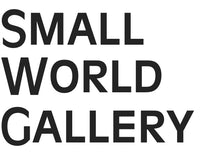
Introducing Amber
Amber’s ancient history is rich, deep and worldwide. It also can be complex.
Amber is a tree resin that was fossilized from between 10 and 100 million years ago. It is is an organic material, not a gem or a stone. Trees in the dense forests of the cretaceous and tertiary geological periods exuded a sticky substance. It often trapped plants and insects as it dripped. Then, as trees fell, they washed into seas or were buried deeply. These resins hardened, compressed, and then migrated around the globe via volcanos, thrusts of the Earth’s crust and sea tides.
By about 11,000 BC, amber started to play a role in the human history of personal ornament. The material was found to be easily carved and drilled; amber also was believed to have magical healing powers. Worked amber was found by archaeologists in England, and wood believed to be varnished by molten amber also has been identified. Aztecs and Mayans of Mexico heated amber as incense. Researchers believe that amber was presented to Christopher Columbus by the Taino Indians of Hispanola.
By 600 BC, amber became a commodity traded around the world. Worked amber beads have been found around the world. Today scholars can test amber and its imbedded material to determine its origin and then piece together more about global trade routes and migrations. By the early 1700s, King Frederick I of Prussia had a room in his summer palace empaneled with amber.
Amber is in deposits throughout Africa and in Mexico, Myanmar (Burma) and the Dominican Republic. Differences among ambers are because of the widely varying species of trees from which resin exuded. Here at Small World we focus on Baltic amber, an ancient product of pine trees from lush Germanic and Prussian forests in the Samland Peninsula around Kaliningrad. This rough amber is transported for cutting and finishing in Lithuania.
The complexity of amber’s story comes in the many look-alikes over the centuries. Stories of mock amber creations are nearly as plentiful as the thing. The world of personal ornament is filled with creative and beautiful substitutes for more expensive and rare jewelry making materials — faux coral, for example. The key is in the labeling, of course, and the understanding of the buyer.

